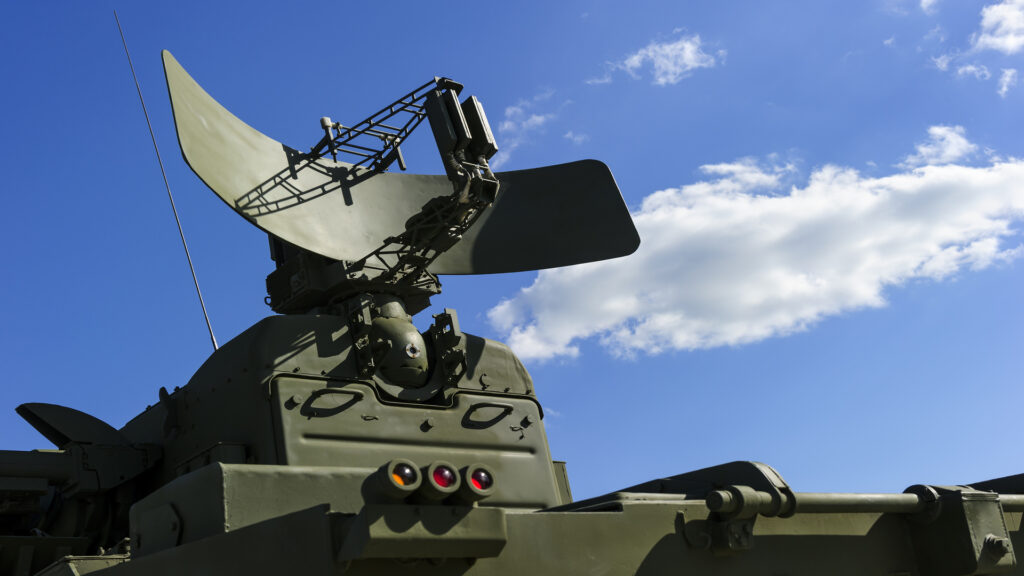Innovative Material Developed to Counteract Missile Defense Technology
Researchers in China have unveiled a groundbreaking material that has the potential to evade the United States’ proposed missile defense system, known as the Golden Dome. Announced by President Donald Trump, this system aims to enhance national security by providing advanced protection against various missile threats. This new material’s design focuses on evading both infrared and microwave detection, making it ideal for high-speed aircraft and missile applications.
High-Performance Stealth Material
Led by Professor Li Qiang at Zhejiang University in Hangzhou, China, the cutting-edge stealth material demonstrates exceptional performance across multiple detection ranges. This includes short-wave, mid-wave, and long-wave infrared detection, as well as microwave frequencies, all while maintaining functionality at extreme temperatures of up to 1,292 degrees Fahrenheit (700 degrees Celsius).
Adapting to Advanced Detection Technologies
With the rapid advancement of detection technologies, stealth materials are evolving to provide comprehensive multispectral protection. These materials are designed to mask objects across a wide spectrum, from visible light to microwaves. However, many military applications operate in high-temperature environments, creating challenges for conventional stealth coatings that risk losing effectiveness or sustaining structural damage due to elevated heat levels.
Novel Thermal Resistance and Stealth Capabilities
Traditional stealth materials often face limitations under extreme temperatures caused by aerodynamic heating or engine exhaust. This situation has led to an increased demand for materials that not only provide effective stealth but also possess robust thermal resistance. The newly developed material addresses this need by undergoing rigorous testing against a blackbody, a perfect absorber of electromagnetic radiation. When subjected to high temperatures, it exhibited a radiation intensity approximately 790°F to 510°F lower than that of the blackbody.
Remarkable Reduction in Radiation Intensity
Notably, this innovative material achieved a significant reduction in radiation intensity, boasting levels that were 63.6% lower than a blackbody in the mid-wave infrared (MWIR) band and 37.2% lower in the short-wave infrared (SWIR) band. Additionally, it excels in heat dissipation; upon heating to 700 degrees Celsius, its heat release capabilities surpassed those of conventional metals, marking a transformative advancement in stealth technology.
Composite Structure Behind the Breakthrough
The success of this stealth material lies in its unique composite structure, which integrates multilayer films with a microwave metasurface. The uppermost layer serves as a moisture barrier, while the bottom layer ensures strong adhesion to various surface materials. Furthermore, the multilayer film is intricately laser-etched, allowing microwaves to pass through without compromising its infrared stealth functionalities. This innovative design achieves exceptional thermal performance that outstrips existing high-temperature infrared and microwave stealth technologies.
Implications for Future Military Technologies
In the wake of President Trump’s announcement regarding the Golden Dome missile defense system—aimed at countering ballistic missiles, hypersonic weapons, and cruise missiles—this new material could play a crucial role in defeating such advanced technologies. Should infrared tracking be the primary method for the Golden Dome system to detect and intercept threats, materials like the one developed by Professor Li’s team may significantly enhance stealth capabilities, ultimately reducing the likelihood of detection.
Revolutionary Stealth Material: The Future of Military Technology
Introduction of Next-Generation Stealth Materials
Innovative breakthroughs in stealth technology have emerged from research institutions, paving the way for advanced military applications. A new material developed in China is designed specifically to evade sophisticated detection systems, providing enhanced operational capabilities for military aircraft and missiles.
Capabilities Across Multiple Detection Ranges
This high-performance stealth material shows promise in resisting various detection methods, including infrared and microwave technologies. Its resilience allows it to operate effectively across short-wave, mid-wave, and long-wave infrared ranges while maintaining performance at extreme temperatures up to 1,292 degrees Fahrenheit (700 degrees Celsius).
Enhancing Stealth in High-Temperature Environments
As detection systems become more advanced, the necessity for materials that can withstand high-temperature conditions has become crucial. Traditional stealth materials often falter under these thermal stresses, which can emanate from aerodynamic forces and engine exhaust. The development of this new material addresses the urgent need for robust multispectral stealth solutions.
Exceptional Performance Compared to Conventional Materials
Testing revealed that the new material demonstrates a significant reduction in radiation intensity, outpacing conventional materials. In mid-wave infrared, radiation levels were 63.6% lower than standard blackbody references, while in short-wave infrared, the reduction reached 37.2%. This makes it a formidable option in stealth technology.
Innovative Design for Enhanced Heat Management
The remarkable design of this stealth material incorporates a multilayered structure, featuring films that work in tandem with a microwave metasurface. While the top layer acts as a moisture barrier, the bottom layer ensures optimal adhesion, allowing for effective integration into various military applications. This composite structure significantly enhances both heat dissipation and stealth capabilities.
The Future of Military Defense Systems
With recent advancements in missile defense systems, including initiatives to counter ballistic and hypersonic threats, the need for materials that evade detection is pressing. If infrared tracking is primarily employed in these defense systems, materials like the one described could substantially reduce detection probabilities, enhancing military operational effectiveness.
Conclusion: A Game-Changer for Military Operations
The development of this innovative stealth material marks a critical advancement in military technology, enabling enhanced stealth capabilities against increasingly sophisticated detection systems. As research progresses, these materials hold the potential to redefine the landscape of military defense and operability, ensuring that armed forces remain a step ahead in technological warfare.


